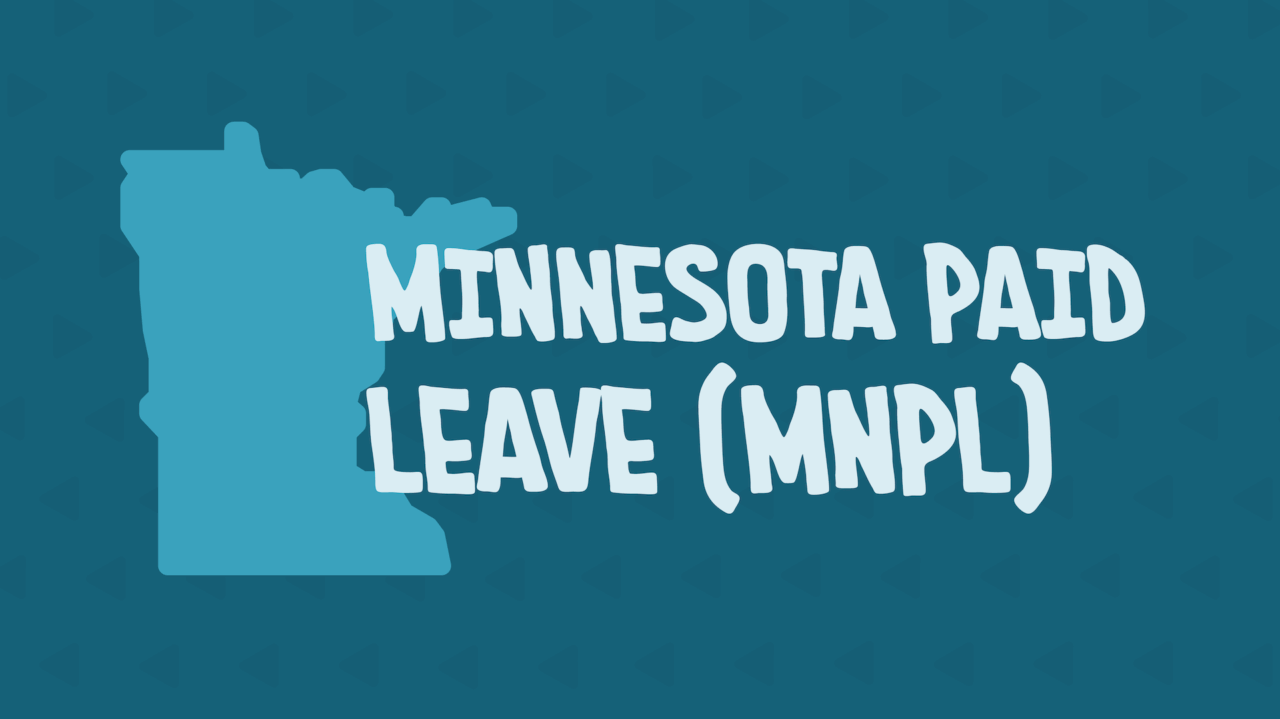Minnesota is joining the growing list of states implementing statewide paid leave. Starting in 2026, the Minnesota Paid Leave (MNPL) program will offer up to 20 weeks wage replacement for eligible workers. Employees may also be eligible for job-protection for up to 20 weeks, depending on their tenure. Employers must participate in the state plan or apply for approval of an equivalent private plan. Here’s a breakdown of what HR teams need to prepare for now, and what’s still in development.
When does Minnesota Paid Leave (MNPL) take effect?
Employees can start taking paid leave on January 1, 2026.
Who is covered under MNPL?
The MNPL program applies to nearly all employers in the state, regardless of size. Only the federal government and tribal government employers are excluded.
Employees are eligible if:
- They work at least 50% of their time in Minnesota, or live in the state at least 50% of the time while working for an out-of-state employer.
- They make a certain amount of wages in the past year, determined by the state average annual wages. For 2026 benefits, this amount is about $3,700.
- Their leave situation, other than bonding claims, lasts longer than 7 days.
- The employee provides sufficient documentation to the Department.
- In addition to wage replacement, employees that work for their employer 90 or more calendar days, receive job protection.
Note: Independent contractors and self-employed individuals may opt in. Certain seasonal employees are not eligible.
What types of leave are covered?
Employees can take up to 12 weeks of paid leave per year for a single qualifying reason. If they need both medical and family leave, they can take up to a total of 20 weeks in a year. Covered reasons include:
Medical Leave
- Serious health condition
- Pregnancy childbirth, or other serious health conditions caused by pregnancy or pregnancy loss
Family Leave
- Bond with a(n) newborn, adopted, or foster child (within 12 months of birth or placement)
- Caring for a family member with a serious health condition
- Pre-placement adoption and foster care activities
Military Leave
- Exigency leave related to deployment
- Caring for a service member with a serious injury or illness
Safe Leave
- Employee or family member is a victim of sexual assault, domestic violence, or stalking
The law uses a broad definition of “family,” including domestic partners, grandparents, grandchildren, in-laws, and anyone the employee has a close personal relationship with and cares for the individual without compensation.
How does pay work under MNPL?
Wage replacement is calculated using a sliding scale:
- Employees with lower wages receive a higher percentage of their pay.
- Employees with higher wages receive a lower percentage, up to a maximum weekly benefit.
There is no waiting period to start leave. However, the employee must be out at least seven days to qualify for payment. This does not apply to bonding leave. Intermittent leave is paid when an employee accumulates 8 hours of leave within a 30-day period.
What contributions are required?
Beginning in 2026, MNPL will be funded by a payroll tax typically shared by employers and employees. Employers do have obligations prior to collecting and submitting premium contributions
- Employers can apply to offer an equivalent plan, but it must be approved by the state and offer equal or better benefits.
- Employers with fewer than 30 employees may qualify for reduced premiums or small business grants during employee leave.
- Large employers may also determine if they wish to split the contribution between the employee and the employer, the employer may pay the full amount, or the employe may choose an amount not less than 50% of the total contribution.
- Contributions are due to the state by April 30, 2026.
Does MNPL include job protection?
Yes. Employees who have worked at least 90 days must be returned to the same or equivalent position after leave. Benefits must be continued during leave, as if the employee were still working, as long as the employee continues paying their portion of premiums.
What else should HR teams know?
- State certification forms will be required for most types of leave
- Employers will receive notification when an employee applies for benefits and when benefit decisions are rendered.
- MNPL may run concurrently with the FMLA, depending on the situation.
- Employer salary continuation, disability programs, vacation/PTO accruals, can be used in conjunction with MNPL so long as the employee does not exceed 100% of their wages from all sources. However, the employee should agree to use of such program, and employer benefits are considered secondary payors to the MNPL benefits.
- Employers will be required to provide written notice to their employees within 30 days of premium contributions, and upon hire. Notice will be produced by the Department and should be given prior to December 1, 2025.
- Seasonal employees that are excluded from MNPL must also be provided with written notice within 30 days of November 1, 2025, and upon hire. Notices will be produced by the Department.
What should HR do today?
Whether your organization is preparing for an upcoming state program or reviewing existing policies, there are steps HR teams can take to stay ready:
- Review current leave policies to identify compliance gaps and overlap with federal, state, and local laws.
- Evaluate your payroll system to ensure it can support contributions and tracking for state programs.
- Train managers on job protection and compliance, especially around new leave entitlements and employee rights.
- Post the workplace poster by December 1, 2025. The Department made this available to employers in July 2025 in English with other languages forthcoming.
- Employers should create accounts and designate proper access of a “Paid Leave Administrator” with the Minnesota Paid Leave program and the Unemployment Insurance program.
- Determine employees that work within Minnesota, reside in Minnesota or are contributing to the Minnesota Unemployment Insurance program. This may require employers to seek legal counsel or advice in determining employee eligibility.
When your team is prepared, you can reduce risk, respond faster to employee needs, and avoid common missteps with new or evolving state leave programs. With the AbsenceSoft Compliance Engine™ (ACE), HR teams will be able to manage state and federal leave laws like MNPL, side-by-side, generate compliant packets with our ACE Packet Generator, and reduce administrative burden through automation and self-service tools.
Need help getting ready for Minnesota Paid Leave?
We’re here to support your team through every step of the transition. Let’s make sure you’re ready before deductions begin. Schedule a demo with a CLMS-certified specialist today.

